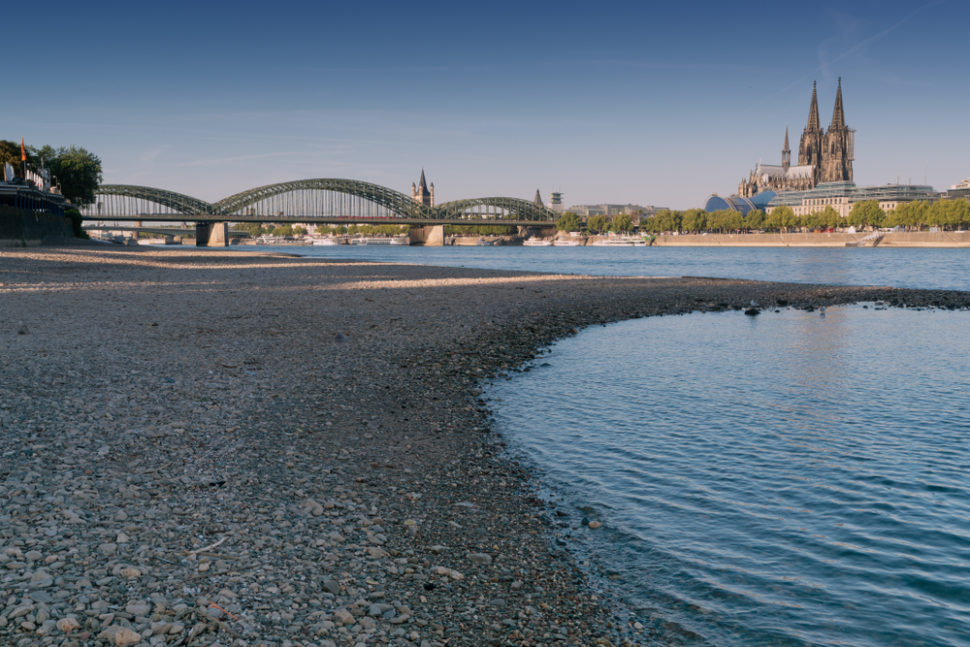The severe drought in Central Europe has unveiled ancient hunger stones engraved with dire warnings in a Czech river.
Climate change has played it subtle for a long time, but that’s no longer the case.
The last three years are the three hottest years on record, with the temperatures in the world on a consistent rise.
The present year is no different. Data from the NOAA (National Oceanic and Atmospheric Administration), show that 2018 is continuing the trend and is on its way to becoming the fourth hottest year ever recorded.
NOAA’s global map of land and ocean temperatures reveal that global warming is earning its name by sparing no region of the planet, with varying shades of red.
For example, heat over most of the Mediterranean now ranges from “warmer than average” to “much warmer than average” to “record warmest”.
This summer in Central European countries, like the Czech Republic, was so dry that relics of past droughts have started to emerge from the waters.
Hunger Stones… If you see Them, Weep!
Long dry spells in Europe are hardly a recent phenomenon.
Ancient Europeans have witnessed severe droughts, and commemorated them over the centuries with boulders that came to be known as the “hunger stones”.
Unlike flood marks that record the rise of waters, the hunger stones mark drops in water levels.
The River Elbe in Central Europe is a major waterway that runs from Czechia and crosses Germany to end up in the North Sea.
As a result of the ongoing drought, the water levels of the Elbe dropped to historic lows. This led to the hydrological landmarks that were submerged below the water line to reveal themselves.
Read More: How to Solve the LA Water Crisis
Now about a dozen “hunger stones” are visible, inscribed with doom-laden messages in German, warning those misfortunate enough to see them of bad harvests, starvation, and highly-priced food.
Arguably the most famous of hunger stones, the Hunger Rock, is engraved with a German inscription [Wenn du mich siehst, dann weine], ”If you see me, weep”. Another Czech message that was inscribed later reads: “Don’t cry, girl, don’t fret. When it’s dry, just spray your field wet.”
According to a 2013 study, these stones record a dozen past droughts that go as far back as 1417.
“Before 1900, the following droughts are commemorated on the stone: 1417, 1616, 1707, 1746, 1790, 1800, 1811, 1830, 1842, 1868, 1892, and 1893.”
If droughts in the Mediterranean region are nothing new, they’re gaining in severity and frequency that ancient people, including those who carved the hunger stones, didn’t have to contend with.
A recent study, published in the International Journal of Climatology, expects droughts “to become increasingly more frequent and severe in the Mediterranean area, western Europe, and Northern Scandinavia, whereas the whole European continent, with the exception of Iceland, will be affected by more frequent and severe extreme droughts under the most severe emission scenario, especially after 2070.”
The impacts of droughts on ancient civilizations were more disastrous than simply causing food prices to soar.
Another study published earlier this month suggests that a drought spell, marked by a 50 to 70 percent drop in annual rainfall, may have set off the fall of the Maya civilization.


















How To Find Your Lost Cryptocurrency.
My name is George Lucas. I want to testify about GEO COORDINATES HACKER. They helped me recover my stolen crypto worth $370,000 through their hacking skills. I tried it. I was skeptical but it worked and I got my money back, I’m so glad I came across them early because I thought I was never going to get my money back from those fake online investments. I want to recommend this great hacker to anyone that truly needs an urgent solution. You can also contact them via
Email; geovcoordinateshacker@proton.me
Email; geovcoordinateshacker@gmail.com Telegram ( @Geocoordinateshacker )Website; https://geovcoordinateshac.wixsite.com/geo-coordinates-hack
Stones, Tree Rings and the Sun. https://www.dropbox.com/s/ftk2u3plyjrmn9w/The%20Solar%20Cycle%20is%20responsible%20for%20extreme%20weather%20and%20Climate%20change.pdf?dl=0